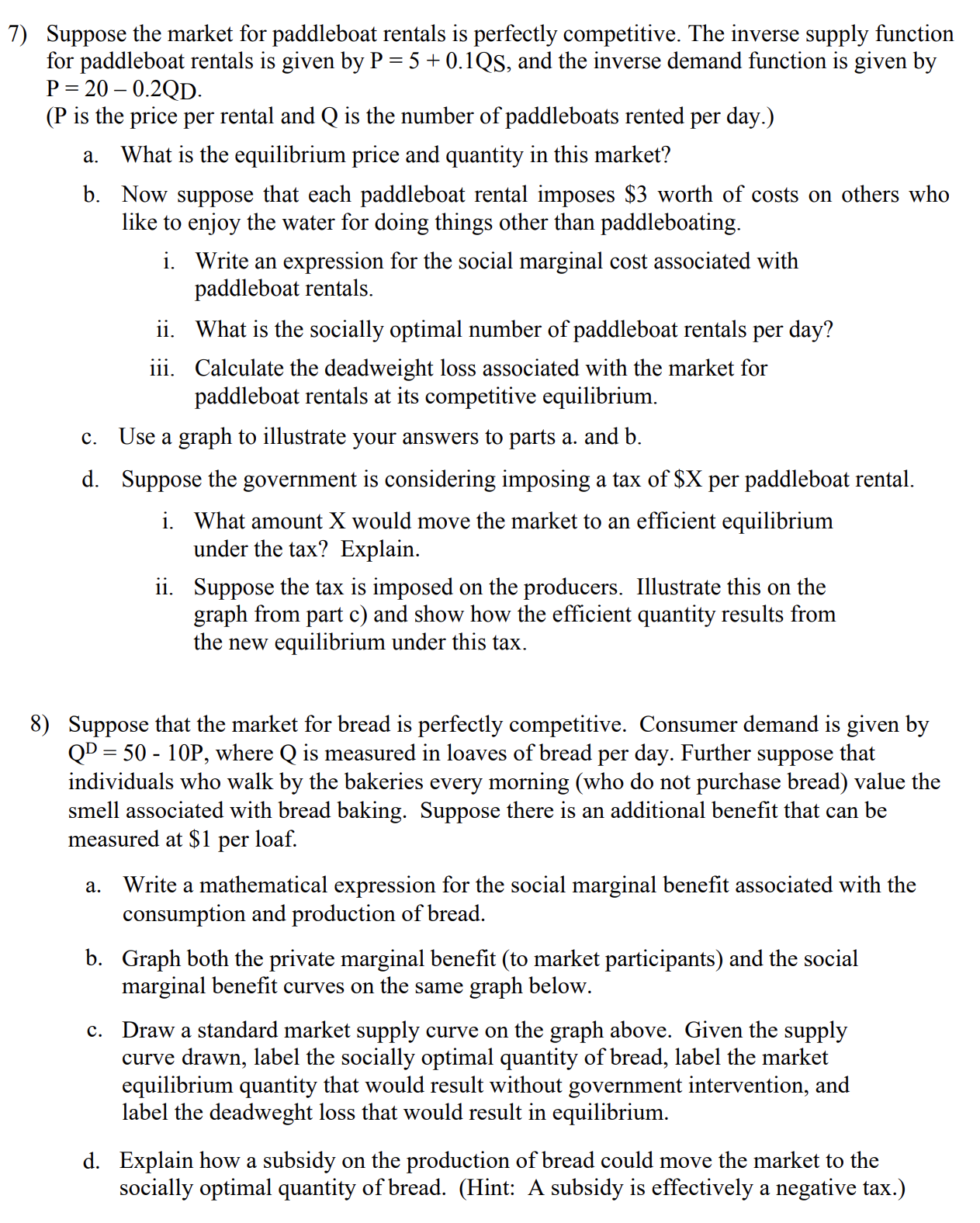
7) Suppose the market for paddleboat rentals is perfectly competitive. The inverse supply function for paddleboat rentals is given by P = 5 + 0.1Qs, and the inverse demand function is given by P = 20 0.2QD. (P is the price per rental and Q is the number of paddleboats rented per day.) a. What is the equilibrium price and quantity in this market? b. Now suppose that each paddleboat rental imposes $3 worth of costs on others who like to enjoy the water for doing things other than paddleboating. i. Write an expression for the social marginal cost associated with paddleboat rentals. ii. What is the socially optimal number of paddleboat rentals per day? iii. Calculate the deadweight loss associated with the market for paddleboat rentals at its competitive equilibrium. c. Use a graph to illustrate your answers to parts a. and b. d. Suppose the government is considering imposing a tax of $X per paddleboat rental. i. What amount X would move the market to an efcient equilibrium under the tax? Explain. ii. Suppose the tax is imposed on the producers. Illustrate this on the graph from part c) and show how the efcient quantity results from the new equilibrium under this tax. 8) Suppose that the market for bread is perfectly competitive. Consumer demand is given by QD = 50 10P, where Q is measured in loaves of bread per day. Further suppose that individuals who walk by the bakeries every morning (who do not purchase bread) value the smell associated with bread baking. Suppose there is an additional benet that can be measured at $1 per loaf. 3. Write a mathematical expression for the social marginal benet associated with the consumption and production of bread. b. Graph both the private marginal benet (to market participants) and the social marginal benet curves on the same graph below. 0. Draw a standard market supply curve on the graph above. Given the supply curve drawn, label the socially optimal quantity of bread, label the market equilibrium quantity that would result without government intervention, and label the deadweght loss that would result in equilibrium. d. Explain how a subsidy on the production of bread could move the market to the socially optimal quantity of bread. (Hint: A subsidy is effectively a negative tax.)








